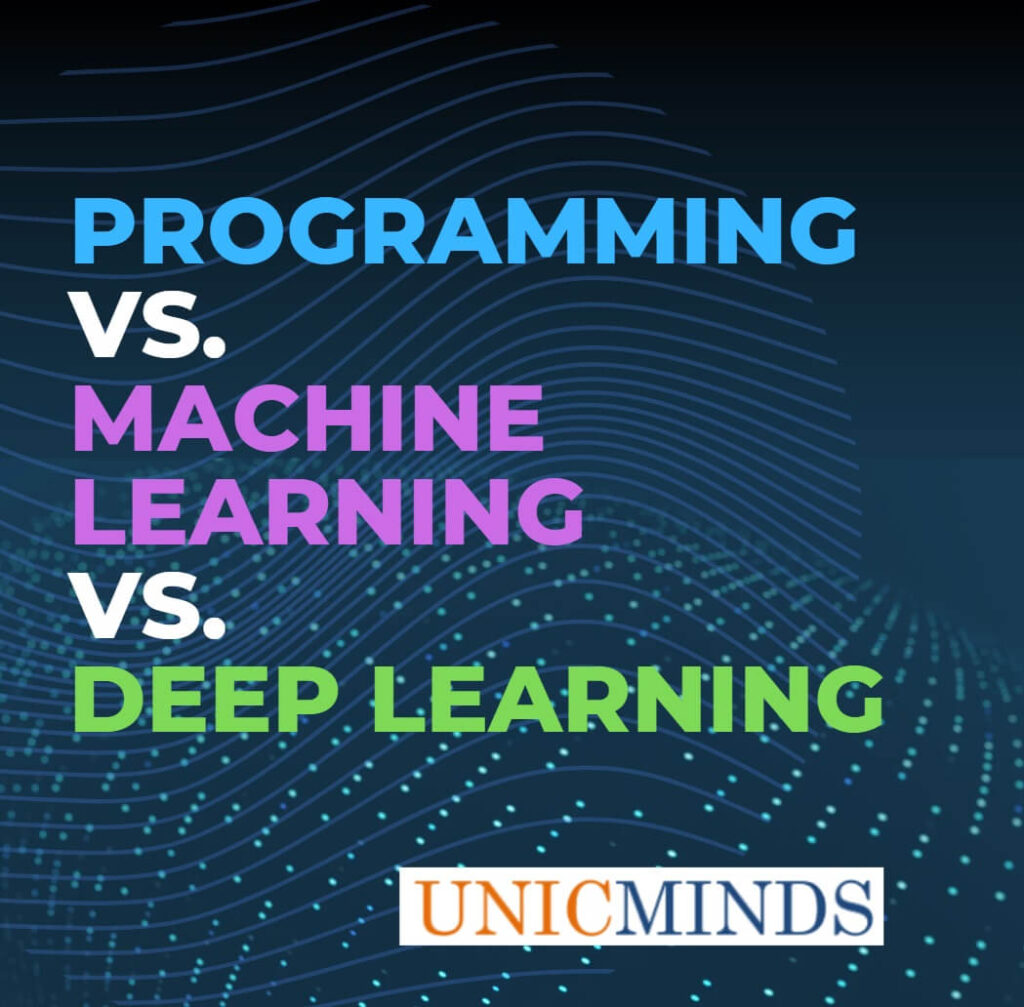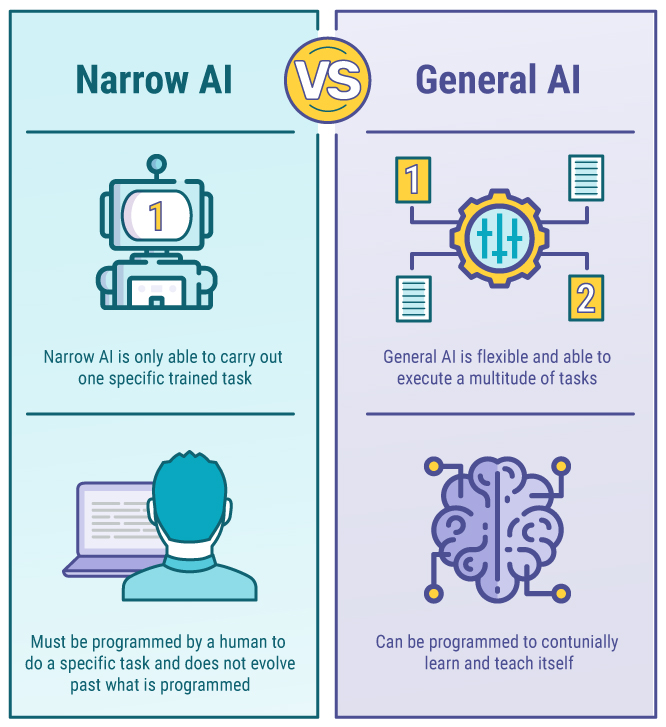Traditional programming is like a programmer writing code for the computer to do something specific. The computer exactly follows the instructions and the program logic on the input provided.
Machine Learning, on the other hand, is like the program is still being instructed by the programmer, but the big difference is that the program is trying to learn and apply that learning on a new data set. The shift from traditional programming to machine learning comes from the paradigm shift in the program trying to learn from data rather than being explicitly programmed for a given output task. Traditional programming is deterministic and fixed, whereas machine learning tries to develop models out of training data sets which can then be used to adapt to new situations.
The main difference is the machine learning program is trying to learn, whereas a traditional program doesn’t try to learn. But in machine learning, the engineer still has to think, design, craft, and engineer the features to be used. Machine learning algorithms broadly do three types of work – classification, prediction (regression), and clustering.
Whereas, deep learning is different from machine learning primarily in the fact that with a lot of data, the algorithm itself chooses the features to be used automatically from the data and doesn’t depend on the programmer or engineer. All deep learning models are machine learning models but not all machine learning models are deep learning models. Deep learning models are most effective when there is a huge amount of data and are effective in classification and prediction techniques. Deep learning models are called ‘deep’ because they’ve multiple layers of neural network architecture, allowing the model to learn complex patterns and relationships. The main difference between a machine learning model and a deep learning model is the multi-layered deep network architecture used by deep learning models that excel at understanding huge amounts of data such as speech, images, natural language processing (NLP), and unstructured data, whereas machine learning models will still be crafted by engineers training the model to do specific tasks under new data circumstances.
Deep Learning vs. Machine Learning w.r.t. Optimization
Deep learning models also specifically differ in doing optimization of the model on its own rather than being extrinsically optimized by an engineer or developer. In traditional machine learning models, the optimization of internal weights, representations, and relationships are all curated by machine learning engineers.
A Simple Analogy of Programming vs. Machine Learning vs. Deep Learning
So, to summarize by taking an example – traditional programming is like the person directly going into war by himself, machine-learning is like the person making a robot to go into war, and deep-learning is like the robot building itself (without human intervention) to go into war.
Machine Learning Algorithms vs. Deep Learning Algorithms
Examples of traditional machine learning algorithms are: regression, decision trees, support vector machines, and random forests. Whereas some examples of deep learning algorithms are: Convolutional Neural Networks (CNNs), Recurrent Neural Networks (RNNs), Long Short-Term Memory networks (LSTNs), Transformer Networks, Deep Q Networks (DQNs), and AutoEncoders.
This is an introductory glimpse into the basics of the vast and fast evolving world of AI. The journey of learning and discovery is extensive, with countless nuances and facets awaiting your exploration. We provide simple courses in simple language for kids to be able to understand and make sense of this world of AI. Come, join us at UnicMinds!
Hope this is useful, thank you.
You may like to read: AI for Kids, Types of Ciphers, and Coding a Monster Game in PyGame



